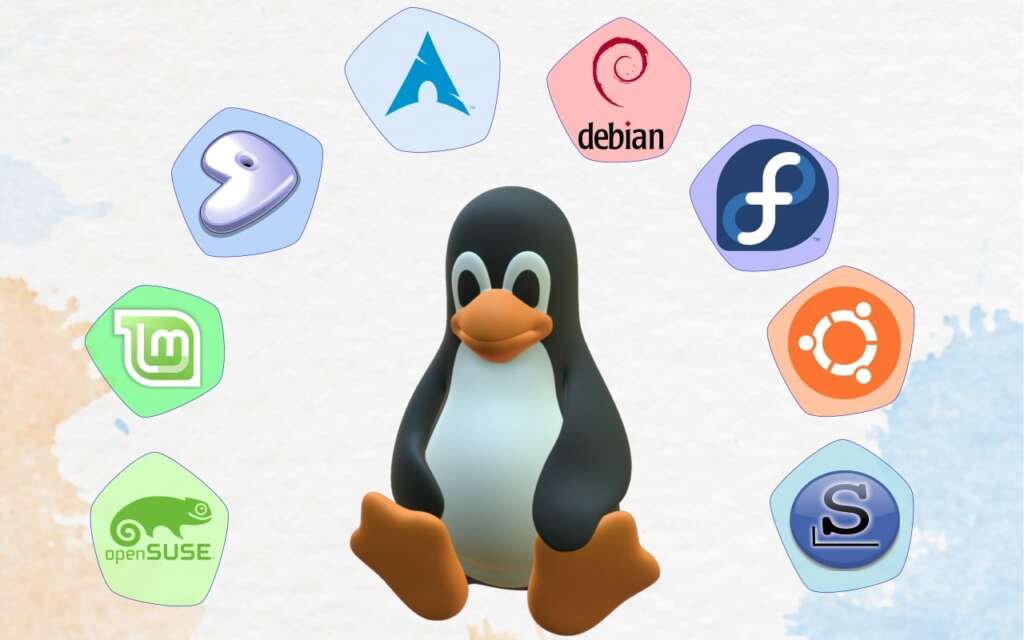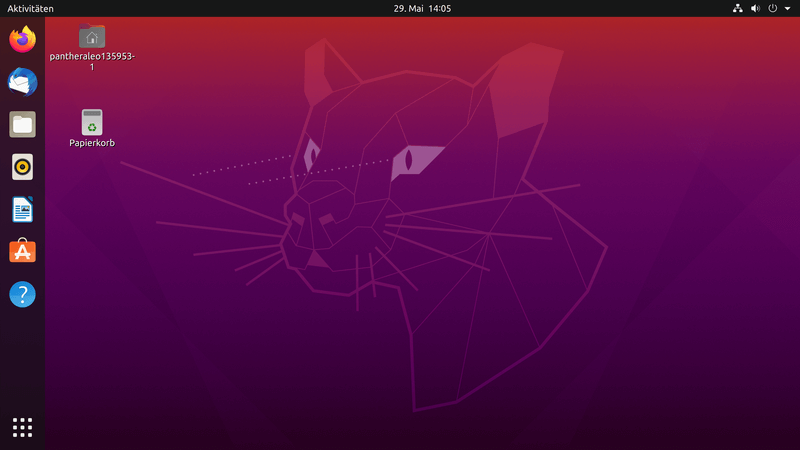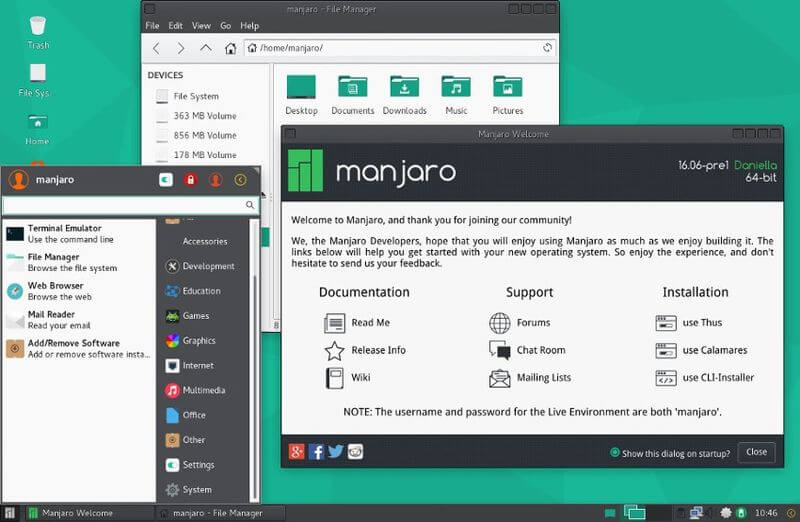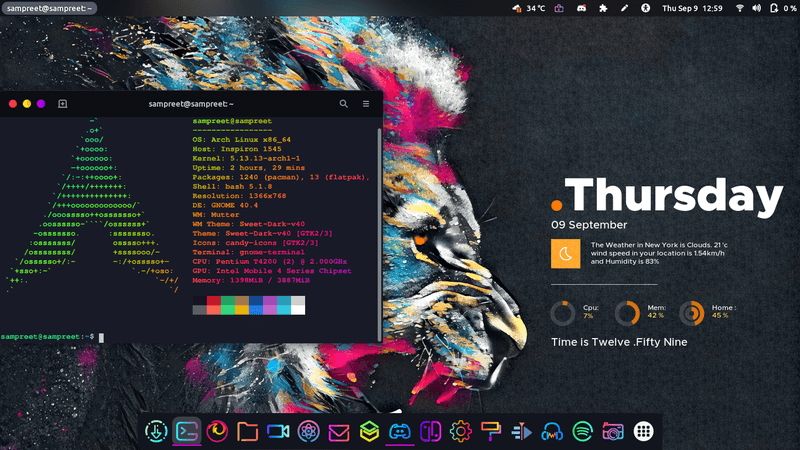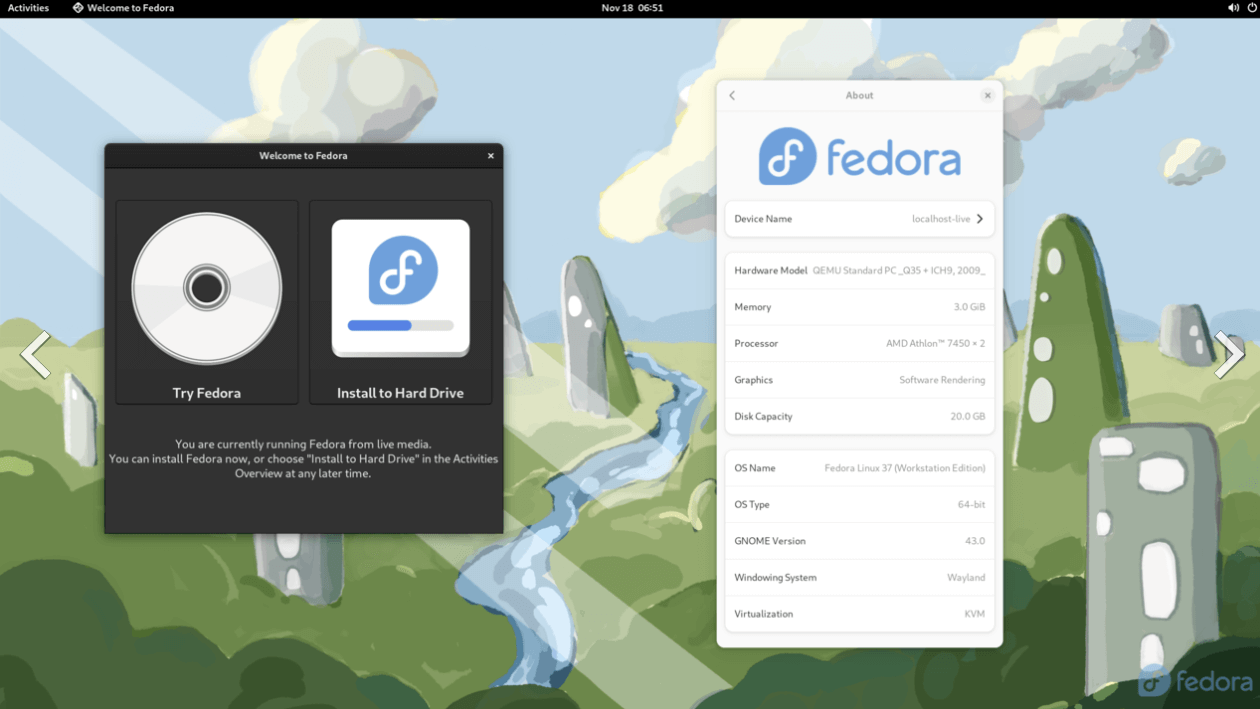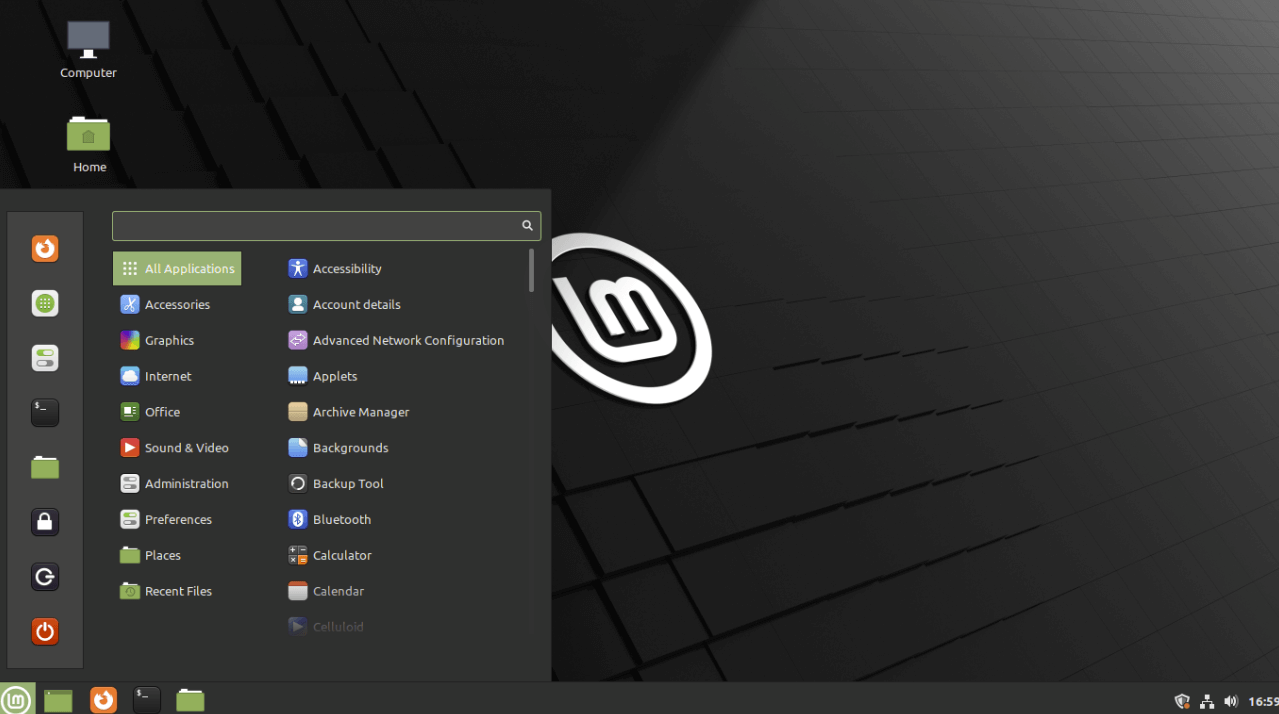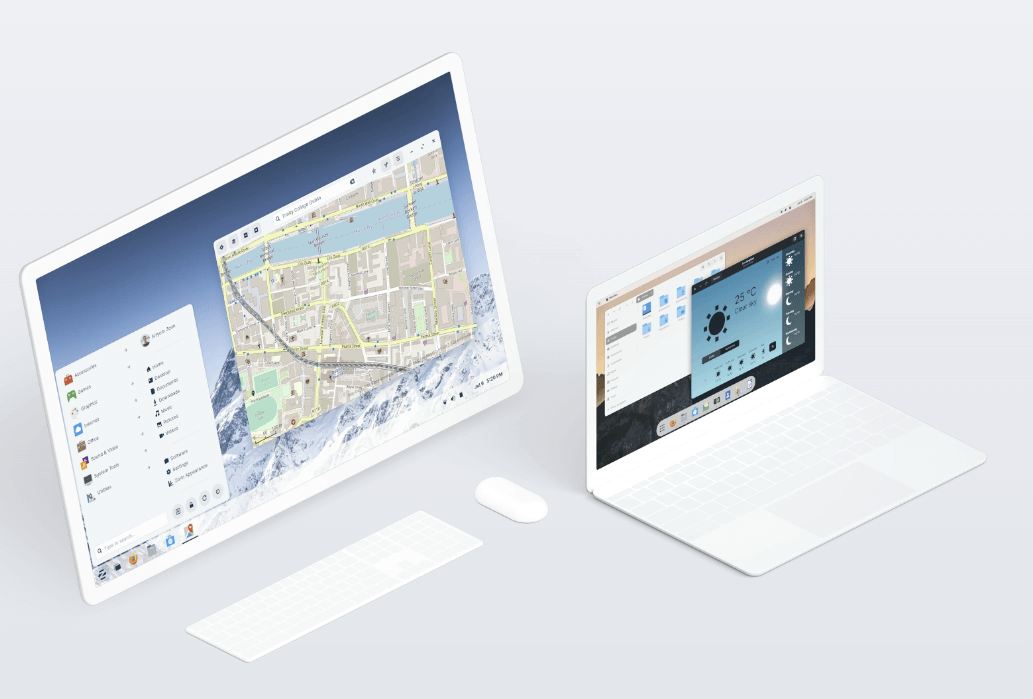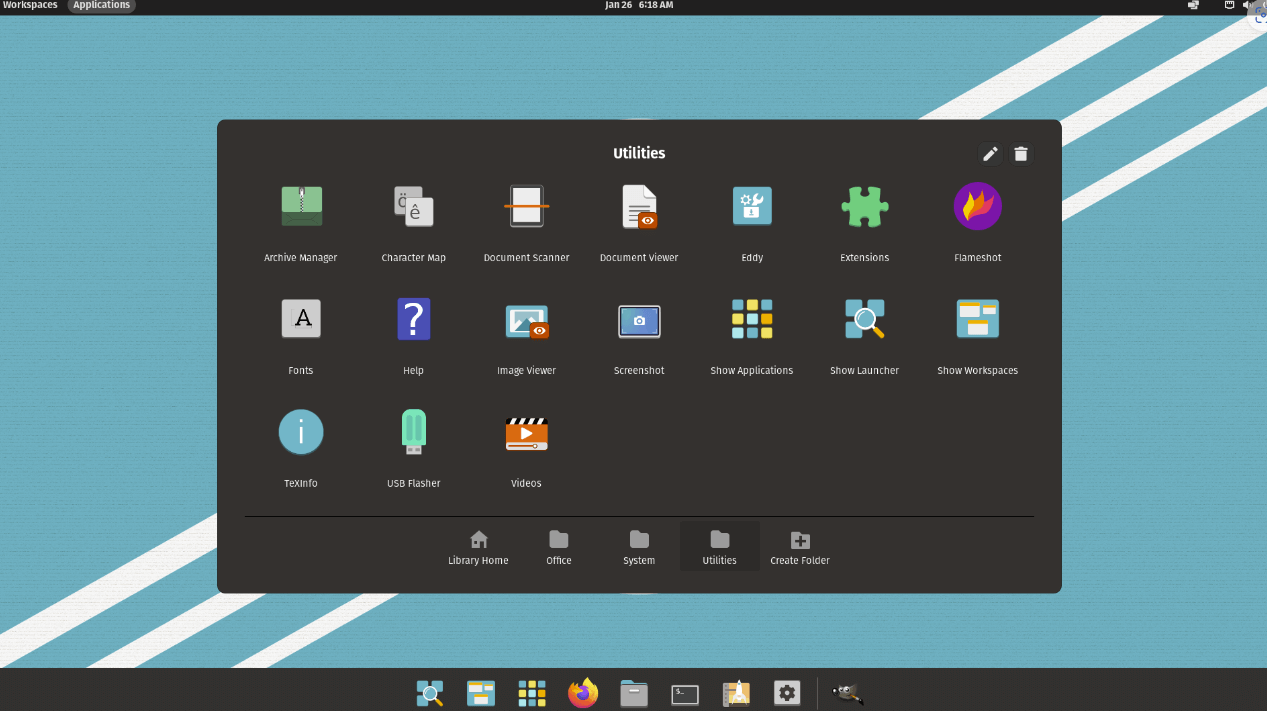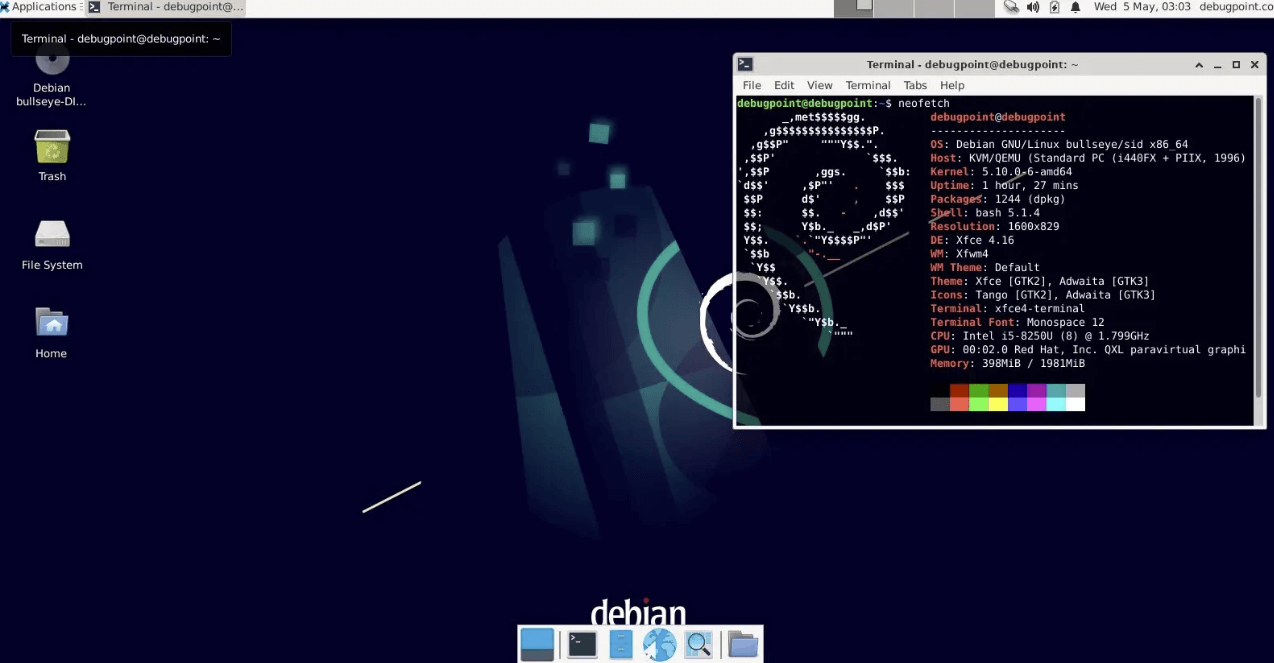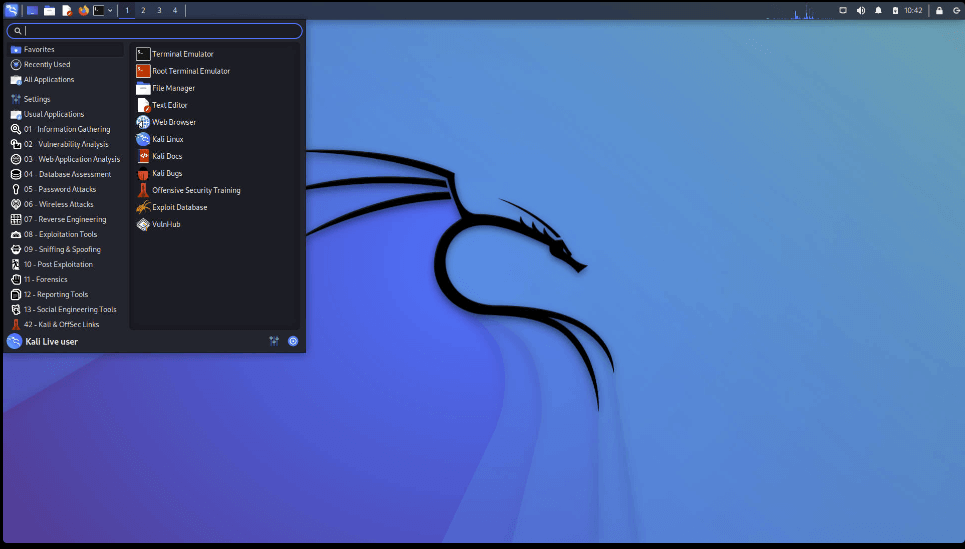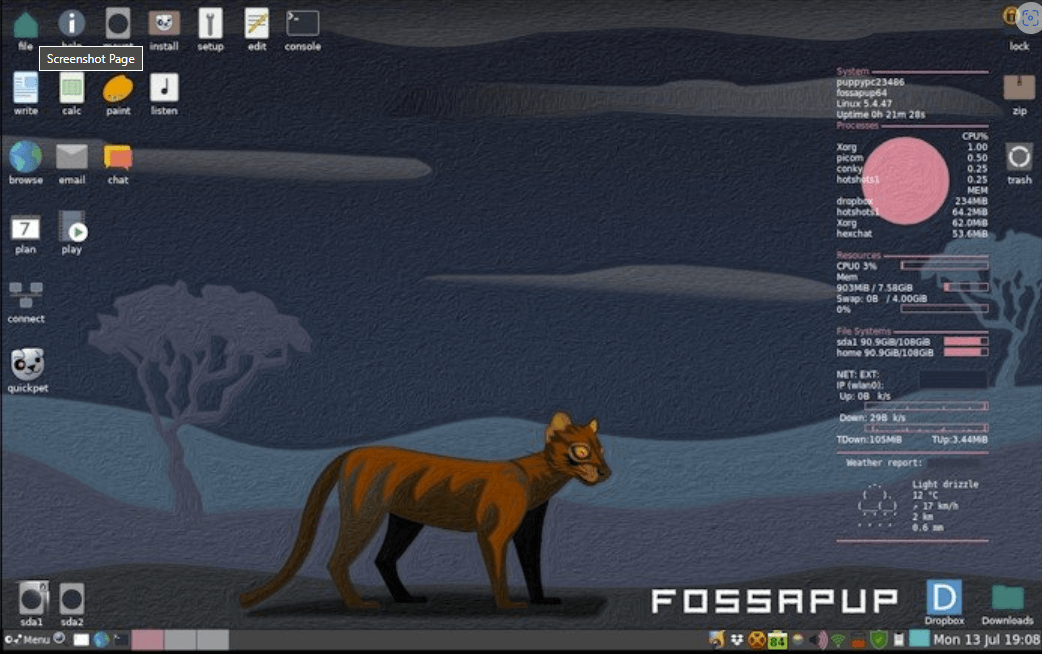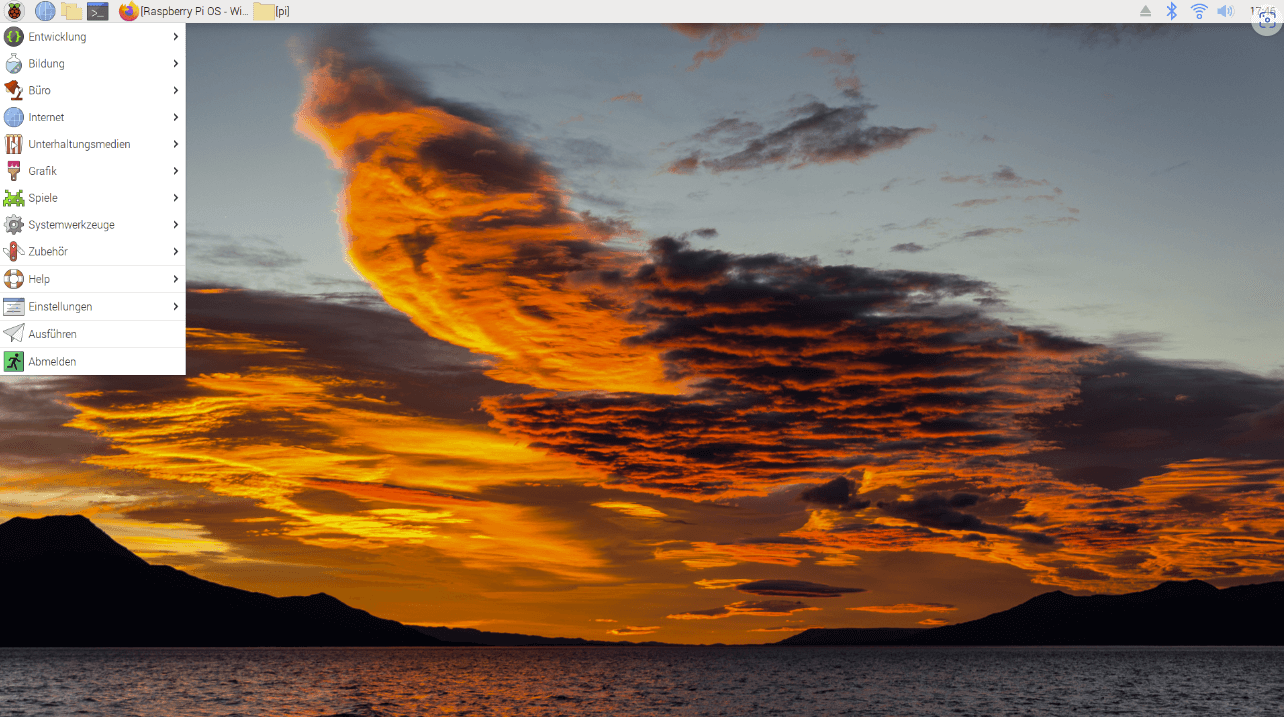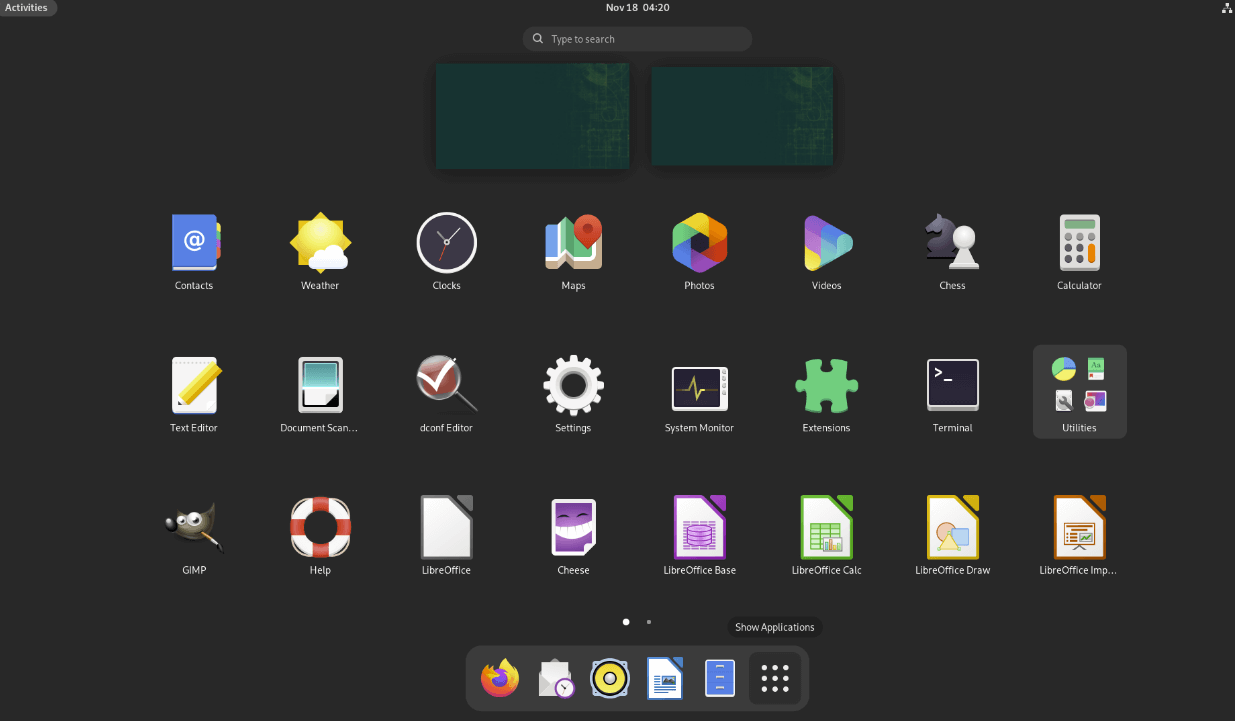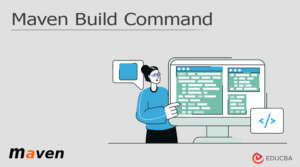If you are a programmer, you’ll notice everything talking about Linux as the best operating system to write programs. That’s true, as Linux offers a stable, secure, and configurable environment to develop apps.
It is also free and updated regularly to give you the best possible experience. That’s why, in this topic, we’ll go through the best Linux distros for programming.
As every programmer has a different requirement, it is impossible to recommend one Linux distro. All distro have features that may fit someone’s needs better.
That’s why our list will contain 12 Linux distros for programming. You can choose the one you like based on your programming/development needs. Let’s get started.
What is Linux?
Linux is a popular open-source operating system. It offers excellent customization and a great feature set for various users worldwide. Linux is primarily popular among advanced users. However, the norm is changing as Linux is becoming more user-friendly than ever, thanks to different user-focused distros.
Many big companies prefer to use Linux as it is open-source. This gives them complete control over the source code, enabling them to customize and configure the OS per their requirements.
For example, Oracle uses Linux to power its services, including products such as virtualization software and Java. They currently offer two OS: Oracle Linux(their take on Linux) and Oracle Solaris. Other examples include IBM, Google, and Redhat.
What is a Linux distro?
Linux distribution is a Linux flavor containing different components, projects, and software. Any Linux distribution needs to have the following:
-
-
- Linux kernel
- An interface. It can be text-based or graphical.
- X server
- Installer
- Package management system
- Supplemental software
- Pre-installed applications
- Upgrade models
-
Some examples of popular Linux distributions include Ubuntu, Fedora, Majora, Kali Linux, and more.
Brief History of Linux and Linux Distributions
Linux history started with Linus Torvalds releasing the Linux operating system in the 1990s. He and Free Software Foundation (FSF) developed the earlier kernel version 0.2.
It took them four years(1994) to release Linux kernel version 1.0. On the other side of the spectrum, Richard Stallman and FSF created GNU, which offers OS utilities. Combining these, we get GNU/Linux, also known as Linux.
Next came the Linux distributions. In 1992, Patrick Volkerding launched Slackware, a popular Linux distro. However, it got toppled by Redhat.
Another popular distro that made news in 1992 was openSUSE. It has stood the time of the test and is still popular(at the time of writing). The creators of openSUSE were Roland Dyroff, Buchard Steinbild, Thomas Fehr, and Hubert Mantel.
More valuable and unique distros came into the market with time. Check out The History of Various Linux Distros to read about Linux distribution.
What Makes a Good Linux Distro for Programming?
Programmers prefer Linux for multiple reasons.
-
-
- Reliability and security: A secure Linux OS can help programmers focus on development rather than trying to protect their intellectual property.
- Free and open-source: Linux is free. This means no spending on software and licensing.
- Access to distributions: Unlike MacOS or Windows, here, you get to choose from various Linux distros, ideal for specific programming needs.
- Controlled updates: Linux doesn’t force its users to update. Here, you’re in complete control and can update whenever you want.
- Great community: Programmers can enjoy proper community support. This way, they can find answers quickly to their queries.
- Faster and less requirement: Linux is faster and works excellently on lesser hardware. So, if you’re running an old machine, you can still use it with Linux to create the best possible development environment.
-
Importantly, Linux offers server shells. It enables programmers to enter commands on a command-line interface and communicate directly with the operating system.
How to choose the best Linux distro for you if you are a programmer?
You must determine your specific requirement to choose the right Linux distro for programming. For example, if you’re a beginner, you should start with Ubuntu or Linux Mint. They both are beginner-friendly and easy to use.
However, if you’re into software engineering, you must pick a more advanced Linux distribution such as RedHat/CentOS or Debian. Slackware, Linux from Scratch, and Gentoo are suitable for hardware enthusiasts.
Next comes Kali Linux, which provides excellent value to pen testers. Lastly, Raspberry Pi is great for Raspberry Pi users.
Note: Most Linux distros offer a live distribution option. This means you can install it on a USB stick and test it before installing it.
12 Best Linux Distros For Programming In 2023
As mentioned earlier, your ideal Linux distro depends on your requirement. With that in mind, let’s list the different options below.
-
-
- Ubuntu – Best for Beginner Programmers
- Manjaro – Best for Intermediate Programmers
- Arch Linux – Best for Advanced Programmers
- Fedora – Ultimate Choice for Top-tier Programmers
- Linux Mint – Great pick for Windows users
- Zorin OS – Best Windows-like Distro for Programmers
- Pop!_OS – Ready-to-Use Linux Distro for Programming
- Debian – Best Pick for Linux Developers
- Kali Linux – Must Pick for Security Experts
- Puppy Linux – For Developers with Old Machines
- Raspberry Pi OS – Must Use for Raspberry Pi Developers
- OpenSUSE – Best Distribution for Sysadmins
-
Ubuntu –Best for Beginner Programmers
Ubuntu’s popularity is not just because it is easy to use and ideal for first-time Linux users. It is also popular because it is also suited for programming.
Ubuntu is Debian based distro and hence is highly stable. However, its Long Term Support(LTS) for five years makes it more desirable among developers considering that they don’t have to keep updating the operating system.
Technically, Ubuntu offers tons of tools out of the box. You can also find and install most packages. It uses an APT package manager to facilitate easy package management. With it, you can perform tasks such as installing, configuring, removing, and upgrading software.
Moreover, Ubuntu also supports the “.deb” package, which makes installing apps and software easy and intuitive. And, if you ever feel lost, you can take advantage of its Software Center, which offers access to great apps for programming.
Before you get started, note that Ubuntu comes in different flavors. It also has Ubuntu Cloud and Ubuntu Server flavors. Overall, Ubuntu is one of the great Linux distros for programming.
Manjaro – Best for Intermediate Programmers
If you like Arch Linux, but don’t like how hard it is, then Manjaro Linux is best suited for you. Manjaro Linux is based on Arch Linux but offers access to a graphical user interface. To install software, you get access to GUI-powered Pacmana and Octopi.
As Manjaro is based on Arch Linux, it is highly customizable. It is also based on rolling updates, meaning you only need to install Manjaro once.
Manjao Linux has three editions for desktop environments: GNOME, XFCE, and KDE.
For programmers, Manjaro has a lot to offer. For example, you can use the configuration framework to modify applications, workflows, and graphics designs.
By this, you can add or remove automatic software updates. You can swiftly change the system’s kernel or use them simultaneously.
Arch Linux – Best for Advanced Programmers
Arch Linux is one of the best Linux distros for advanced users. It is a cutting-edge community-driven distro that gives access to new packages. And that’s why it falls under the rolling release.
This means you only need to install it once and don’t have to worry about updating it. However, you must update to the latest version once the new packages arrive. So, to maintain a stable programming environment
It also has low hardware requirements. Arch Linux’s minimum requirements include 512 MB RAM, 2 GB disk space, and a CPU.
Here, you don’t get any GUI. This means you need to work with the terminal. As for the package manager, you get Pacman and AUR infrastructure.
You get compensated with these amazing command line scripts because you can’t access GUI. These scripts include (c)fdisk, (c)gdisk for partitioning, arch-install-scripts package contents, SSH daemon for remote installation, and wi-fi menu command.
Fedora – best for server programmers
Fedora is one of the well-known Linux distros for programming. Like Debian, it comes in different editions, including server, IoT, and desktop workshops.
Fedora distro ships in different desktop environments, including KDE Plasma, XFCE, LXQT, Cinnamon, and others. You’ll get access to the GNOME desktop environment if you download the default Fedora distro.
Additionally, Fedora is a community-managed Linux distro. It is also a testbed for RHEL(Red Hat Enterprise Linux). So, features and packages are tested in Fedora before being pushed to RHEL, an enterprise-ready Linux distribution.
Your choice of Fedora flavor depends on your use case. If you’re a developer, then the Fedora workstation is for you. The Fedora server edition works excellent for server programmers- a must-pick for system admins.
Fedora also works great out of the box. It is compatible with most modern hardware. Furthermore, it is also a tremendous 2nd distro pick for beginners who want to move from Ubuntu-based Linux distributions.
As for features, it comes pre-installed with the most common packages. You can also access the recent Gnome 3 shell with excellent Yum dependency management. They also offer minor releases that provide new features and bug fixes.
Before jumping and using Fedora for programming, ensure you have a decent machine to power it. You need at least 2 GB RAM, a 2 GHz dual-core processor, and 15 GB of free space.
Linux Mint – A great beginner-friendly Windows-like Linux operating system
Linux Mint excels as the best Linux distro for developers. It resembles the Windows interface. Moreover, it is a lightweight distro with interface options such as MATE, Cinnamon, and XFCE.
Under the hood, it uses Ubuntu and Linux kernel. This means it runs all Linux commands with ease. Its package management relies on Advanced Package Tool (APT).
Programmers can also take advantage of Linux Mint’s Software Manager. They can browse, download and install software development tools and apps through it. It follows less strict rules, allowing you to install any app.
Overall, Linux Mint is one of the most popular Linux distros. It is easy to pick up and use with a low learning curve.
Zorin OS – best for programmers coming from Windows
Zorin OS is one of the most popular Linux distributions out there. It is user-friendly and best suited for Windows users. Its desktop environment adopts Mac OS and Windows, offering access to explorer such as Window manager.
Zorin OS borrows heavily from Ubuntu and provides access to the Linux kernel. Here, you get access to Gnome 3 or XFCE desktop environment. Moreover, it is created with security in mind, providing excellent resilience against malware and viruses.
Currently, they offer flavors for schools as well. And, if you want to pay, you can get access to their PRO version, which provides access to advanced features and custom apps.
Zorin OS minimum requirements are low. This makes it a lightweight Linux distro. You need a 1 GHz dual-core processor, 2 GB RAM, and 15 GB of free space to run it.
But what makes it so good for programming? First, you get familiarity(mainly if you previously used Windows). Secondly, it offers WINE’s compatibility with Windows. This means you can work with pre-installed applications and custom apps made for Windows.
Overall, Zorin OS is an excellent Linux distro for programming.
Pop!_OS – Ready to Use Linux Distro for Programming
Pop!_OS is a relatively new distro but offers excellent features for programming. Its COSMIC desktop environment inspires by GNOME. It is fast and provides developers, computer science professionals, and makers with a great working environment.
You’ll also enjoy its keyboard-driven tiling window manager support as a programmer. It gives you the ability to create a productive workflow. It also offers access to workspaces, window management, and shortcuts.
Under the hood, Pop!_OS uses Ubuntu, but there are plenty of differences between them.
Debian – best for programmers that prefer a stable environment
If you’re working on a critical application, you need the most stable Linux distro. Debian is one of those stable distros; I also list it as my best Linux distro.
Debian follows a three-branch approach consisting of an Unstable, Testing, and Stable branch.
As you might have guessed, only the packages that pass testing and pushed to the Stable branch. This means time-tested packages that won’t break your development process.
Kali Linux – best for security programmers
Kali Linux is one of the best Linux distributions, especially if you’re a security programmer or an ethical hacker. It offers access to tons of penetration testing tools. You can also use any of your favorite programming languages to write scripts for testing vulnerable networks or computers.
However, it is not for absolute beginner programmers. Experienced Linux users, on the other hand, can utilize Kali Linux to its potential.
The company behind Kali Linux is Offensive Security. Under the hood, it uses Debian – a stable distribution. As a penetration testing-focused distro, you can access secure apps and tools such as OWASP ZAP, THC Hydra, and SQLMAP.
But does Kali Linux fits as a software development distro? Well, no. It is specialized for pen testing. Also, it would be best if you remembered that the distro ships tools for testing, but that doesn’t mean it’ll make you a hacker or a security expert.
You need in-depth knowledge of programming languages, security, and computers to work with Kali Linux.
Puppy Linux – For Developers with Old Machines
Not everyone has a powerful computer or laptop to run a Linux development environment. That’s where Puppy Linux comes into play. They offer different flavors, one optimized for old and the other for newer computers, based on Ubuntu and Slackware.
It is a lightweight distro that is fast and reliable. Moreover, it is customizable.
To install it, you only need 300 MB or less. This also means that it doesn’t come with a lot of features. However, it has enough features to start your development environment.
If you want to install apps, you can use SquashFS files. These files comprise all the required packages in a compressed format. You also get access to the devx SFS file, which contains various build and development tools.
Raspberry Pi OS – best for students and Python programmers
If you do projects with Raspberry Pi, you must use Raspberry Pi OS. It is a Linux kernel-powered operating system, ideal for students and Python programmers. It supports most programming languages and tools. It is a great Linux distro for developers building embedded systems.
Raspberry Pi OS comes with Mathematica, Node-RED, Greenfoot, BlueJ, and other programming and learning tools.
OpenSUSE – best for sysadmins
OpenSUSE is a popular Linux distro tailor-made for sysadmins, desktop users, and developers. It comes into core flavors: Tumbleweed, a rolling release that is fast and stable. The 2nd flavor is Leap which offers a more stable version.
Once you install it, you’ll get access to YaST(Yet another Setup Tool). It takes care of configuration needs.
It also offers access to Open Build Service(OBS), openQA, and Kiwi.
Overall, OpenSUSE is a fantastic Linux distro. It adds tons of source code with its releases, adding new features. Also, it doesn’t push the updates, as system admins are free to control the release’s delivery plan.
However, to run OpenSUSE won’t run on older computers. You need a decent machine offering at least 2 GB RAM, 2.4 Ghz or a dual-core processor, and 40 GB of free space.
Other Notable Programming Distros
-
-
- MX Linux: Run any programming language of your choice.
- Parrot OS: Offers access to tons of tools for developers.
- Solus OS: x86-64 architectures based on Lnux
- Drauger OS: A great distro for game programming.
- Rocky Linux distro: Rocky Linux is an enterprise Linux compatible with RHEL.
- Cent OS: One of the best Linux distros for enterprise development
- Gentoo Linux: It is fast and offers a customized Xfce desktop.
-
Conclusion
Linux is one of the best operating systems for programming. Unlike Windows or Mac, it gives you plenty of options in the form of distros. For example, if you like a simple beginner-friendly distro for programming, you can choose between Elementary OS, Linux Mint, or any Ubuntu-based Linux distribution.
However, suppose you like experimentation and want access to new features. In that case, you must choose Arch Linux or an Arch-based Linux distro such as Manjaro, which is ideal for experienced users. Among the most Lightweight Linux Distros, you have Puppy Linux.
The great thing about all these options is that they use open-source software. You’re free to customize your distro based on your workflow. Most distros offer different desktop environment(s), while few distros don’t.
So, what do you think about the Linux ecosystem? Did you find the best programming distro? If so, comment below and let us know, especially if you’re one of the new Linux users starting your programming journey.

